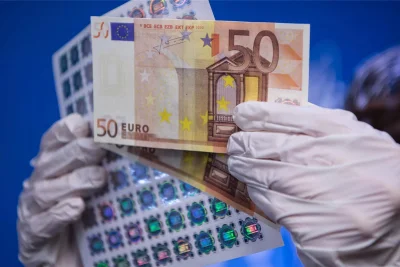The Intricacies of Counterfeit Currency: Understanding Quality and Legal Implications
While the term "counterfeit money" often conjures images of criminal activity and dubious dealings, the reality is that the production and distribution of counterfeit currency incorporate a series of inspirations and repercussions that can be as complex as they are unlawful. The development of digital resources and technologies has made conversations on counterfeit money more widespread, leading individuals to explore numerous elements of this underground world. Understanding the nuances of premium counterfeit money, and the prospective ramifications of engaging with it, is crucial for anybody interested in the topic.
Defining Counterfeit Currency
Counterfeit currency refers to bills or coins produced with the intent to deceive, created to simulate legitimate currency issued by a federal government or main bank. Quality is typically assessed based on a number of factors, including:
Materials Used: High-quality counterfeit notes might use similar paper, ink, and security functions found in real currency.
Information and Design: A concentrate on reproducing great information, such as watermarks or holograms, is essential for creating credible counterfeits.
Printing Techniques: Sophisticated methods, often utilizing commercial-grade printing devices, allow the production of convincing replicas.
The Economics of Counterfeiting
The reasons people or groups engage in counterfeiting can be differed, but frequently include the list below aspects:
Earnings Motive: Counterfeiters typically operate in the shadows to optimize their profits through the circulation of fake currency.
Ease of access: The availability of advanced printing technologies has made it much easier for counterfeiters to produce top quality notes.
Need: The undercurrent of demand for counterfeit money exists due to the bargaining power it may afford to some individuals or companies.
Nevertheless, participating in the production or distribution of counterfeit currency is prohibited, with extreme legal effects.
Legal Implications

Diving into the world of counterfeit money brings with it major legal repercussions, including:
Crook Charges: In many jurisdictions, producing or distributing counterfeit currency is a felony. Convictions might result in prolonged jail sentences and significant fines.
Civil Liability: Beyond criminal charges, people may find themselves facing civil lawsuits from those hurt by the blood circulation of counterfeit notes.
Authorities Investigation: Engaging with counterfeit currency frequently attracts the attention of police, resulting in examinations and prospective arrests.
This legal structure stresses that the attraction of counterfeit currency is laden with risk.
The Quality Factor: What to Look For
Top quality counterfeit currency can be tough to differentiate from the real thing, particularly as technology continues to advance. Here are some key indications that individuals frequently try to find when examining the quality of counterfeit notes (although one must keep in mind that ownership or blood circulation of counterfeit currency is prohibited):.
Paper Quality: Genuine currency utilizes a specific kind of paper which contains a particular ratio of cotton and linen, making it more resilient than routine paper.
beste webseite für falschgeld Shifting Ink: Many legitimate banknotes feature color-shifting ink that alters color when viewed from various angles. High-quality fakes might replicate this function, though badly.
Watermarks: Most currencies consist of watermarks that show up when held up to light. Counterfeit recreations might fall short in mimicking this trademark.
Security Threads: Genuine currency has actually embedded security threads that can be found by touch; quality counterfeits might not duplicate this function precisely.
Microprinting: The usage of microprinting (little text that appears blurry to the naked eye) is another often poorly replicated feature.
The Risks of Counterfeiting.
Engaging with counterfeit money exceeds legal implications; there are significant threats included, including:.
Financial Loss: Even if one effectively acquires counterfeit currency, there is constantly the risk of getting captured, leading to monetary loss alongside legal problems.
Social Consequences: Being included in unlawful activities can tarnish one's reputation and relationships, both personal and professional.
Increased Law Enforcement Scrutiny: Buying or offering counterfeit money piques the interest of law enforcement, possibly resulting in investigations that put people at greater risk.
FAQs.
1. Is it unlawful to own counterfeit money?
Yes, possessing professionelle fälschungen kaufen is unlawful, and people might face criminal charges for merely holding or trying to utilize such currency.
2. What should I do if I inadvertently get counterfeit currency?
If you believe that you have gotten counterfeit money, do not attempt to spend it. Rather, report falschgeld kaufen darknet to your regional authorities or the banks where you received the counterfeit note.
3. Are there genuine uses for counterfeit currency?
No. There are no genuine uses for counterfeit currency. However, some people may develop props for instructional, artistic, or movie functions and can obtain special consent for this under specific laws.
4. How can I protect myself from counterfeit currency?
Stay Informed: Familiarize yourself with the functions of legitimate currency.
Usage Anti-Counterfeit Tools: Tools such as UV light detectors can help recognize counterfeit notes.
Be Cautious in Transactions: Be careful of accepting money in circumstances that feel questionable, and make transactions in credible environments.
Conclusion.
The world of counterfeit currency is swarming with danger, legal consequences, and ethical problems. While the appeal of high-quality counterfeit notes might be appealing to some, it is crucial to keep in mind the legal and social repercussions that accompany involvement in such activities. Rather of browsing the dirty waters of counterfeit money, individuals are motivated to look for genuine avenues for financial transactions, concentrating on stability and legality in their financial pursuits.
